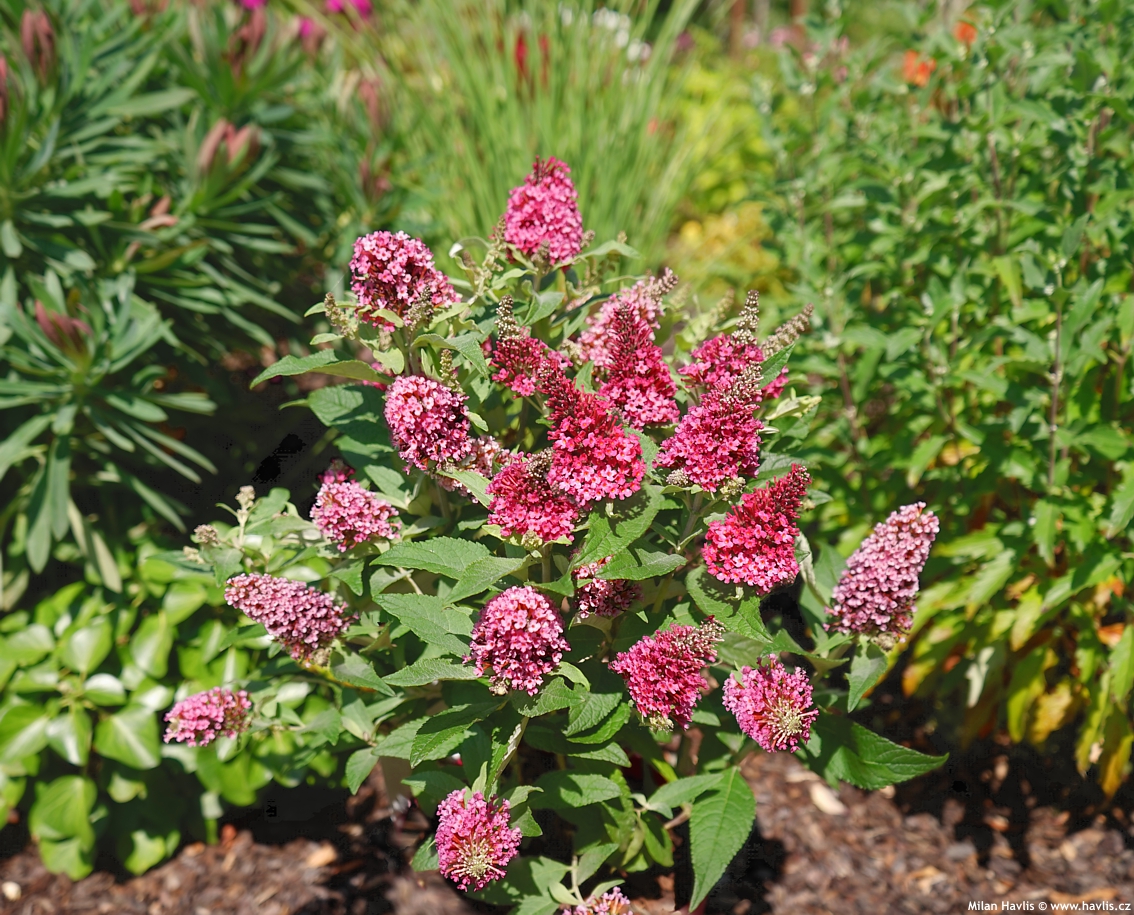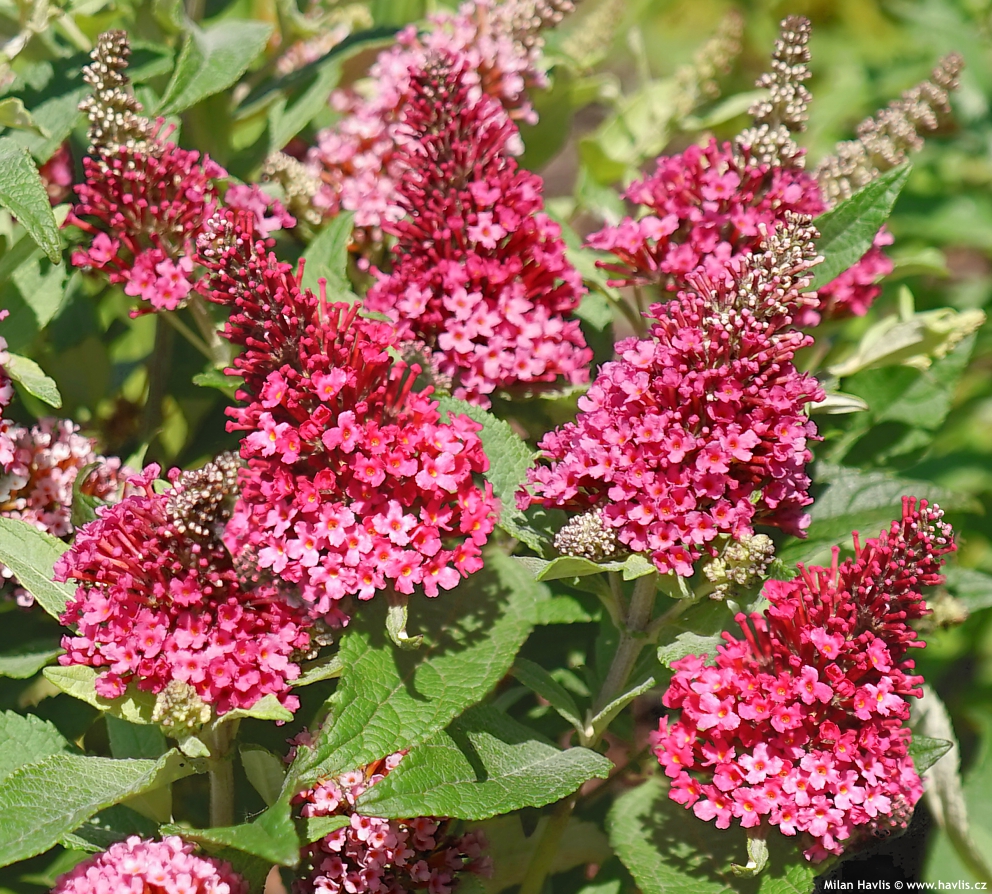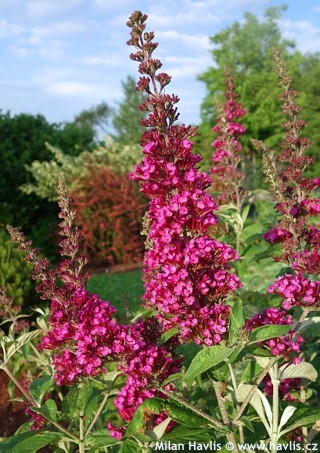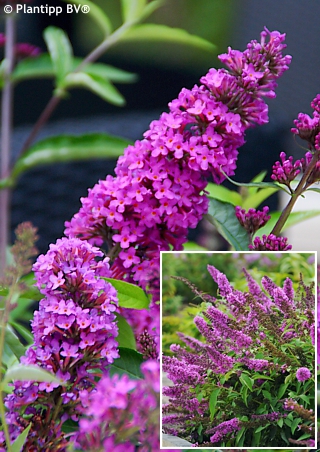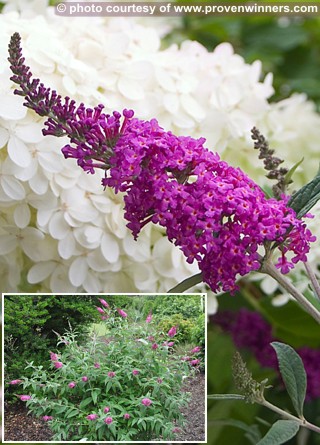Buddleja davidii 'BotEx 006' BUTTERFLY CANDY™ LITTLE RUBY butterfly bush, buddleja
size/type
small shrub,small shrub
usual height
0,6-0,8m
usual width
0,6-0,8m
leaves
deciduous broadleaf
colour of leaves
flowers
showy
colour of flowers
blooming time
July-September
location
full sun
soil type
any (acidic to alkaline)
soil moisture requirements
evenly moist but well-drained
USDA zone (lowest)
5 (down to -29°C)
winter protection
for zone 5+6

for zone 7

categorized
Buddleja
Buddleja is better known as butterfly bush. The reason is obvious – from early summer when it starts blooming until early autumn it produces large, scented flowers that attract winged insects, mostly butterflies. The BUTTERFLY CANDY™ series really got me. Such an amazing range of dense, bushy, and compact plants in several attractive colours makes no excuse of not using buddleja in any garden because of lack of space. It is bred by Johannes Adrianus Maria Koot from Botanic Experience B.V., a subsidiary of a renowned Dutch nursery van Son & Koot. The plants flower all summer long and they grow to about 80 cm in height and width.Description of the plant:
BUTTERFLY CANDY™ LITTLE RUBY is a dwarf and compact buddleja producing rich raspberry pink to cerise flowers. The inflorescence is conical, slim, only some 6-8 cm long, and composed of small, funnel-shaped flowers. They are moderately, sweetly fragrant and bloom from late June until late September. Deciduous leaves are lanceolate, hairy as they emerge, medium green and partly glossy above and silver on the reverse, without a significant autumn colour change. The plant makes an upright, very dense and bushy shrub. Deadheading is important to promote continuous flowering. This variety was awarded Gold Medal at KVBC Summer Challenge 2021 and in the USA it is sold as BUTTERFLY CANDY™ Lil’ Raspberry™.Butterfly bush requires little care. Still, one thing is vital for a nice and strong plant: hard pruning every spring to low permanent framework when buds begin to swell. Plant it in full sun, in well-drained, humus-rich soil. It will very likely die in boggy soil after winter. Though hardy to -29 °C (USDA zone 5) it performs better in warmer zones. We suggest buying older plants with woody framework for planting in colder areas.
Last update 04-08-2022
QUICK PRICE OVERVIEW
CURRENTLY SOLD OUT
WANT TO TRY A SIMILAR PLANT?














